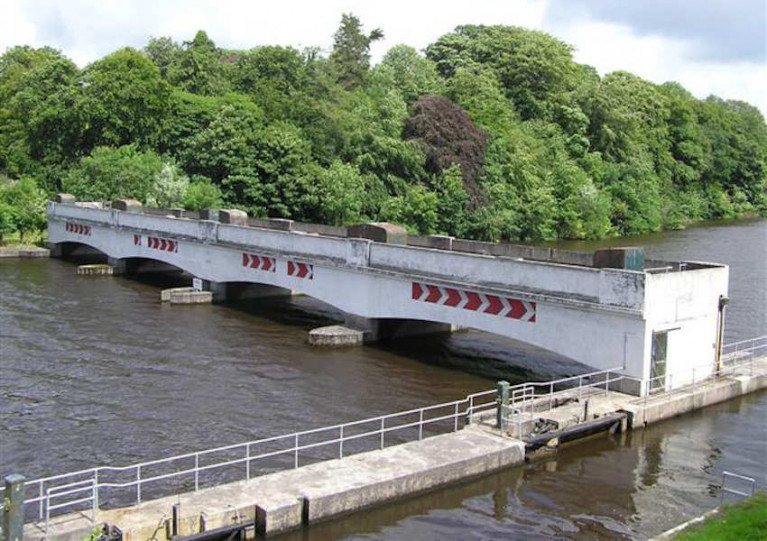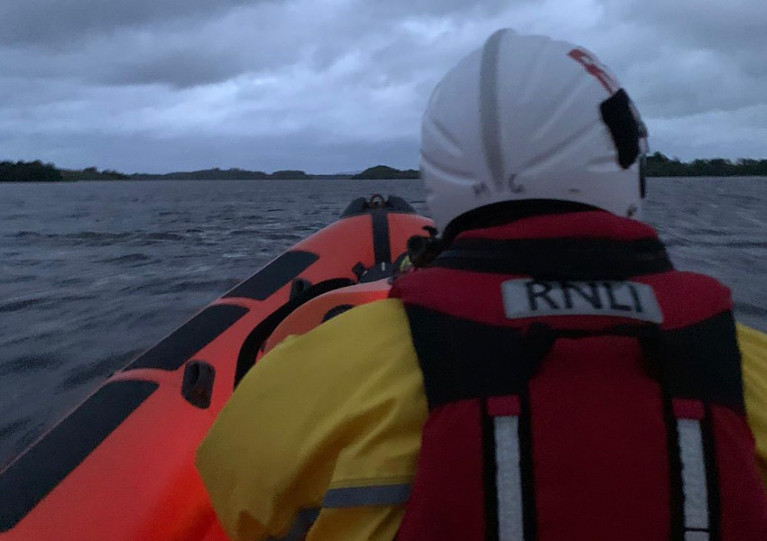Displaying items by tag: Enniskillen
Erne System: Portora Lock Closure for Maintenance This Week
Waterways Ireland advises that Portora Lock on the Erne System near Enniskillen will be closed to boat traffic on Tuesday 19 and Wednesday 20 January to accommodate essential maintenance works to the lock gates.
Masters of vessels on this inland waterway are asked to heed all instructions from safety personnel who will be in the area.
Six Rescued From Lough Erne Boats Jostled In Strong Winds As Fermanagh Braves Worst Of Storm Ellen
Six people were rescued from their boats on Lough Erne as Storm Ellen swept over Northern Ireland in the early hours of Thursday (20 August).
Enniskillen RNLI said the vessels, which were moored at the Devenish West jetty, were breaking their moorings in the strong winds.
All six passengers across the two brought to safety in Enniskillen aboard the inshore lifeboat.
Meanwhile, three other vessels breaking their moorings at Lough Erne Yacht Club were assisted by the lifeboat station’s shore crew.
Fermanagh braved the worst of Storm Ellen in Northern Ireland, while the Foyle Bridge in Derry had to be closed for a time amid gales and driving rain, as the News Letter reports.
Enniskillen and Kenmare on Song at Castleconnell Head
#Rowing: Enniskillen, Kenmare and the host club all had notable results at the giant Castleconnell Head of the River today. Enniskillen’s girls’ eights were fastest at junior 18, junior 16 and junior 15 level – and their junior 18 women’s quadruple also hit the mark. The top junior 18 single sculler was Eabha Benson of St Michael’s. Georgia O’Brien was the top senior single sculler.
O’Brien is a Kenmare woman, and her club of origin had two remarkable results. Tom Kelly won the junior 18 singles and teamed up with 16-year-old Rowan Glynn-Johnston in the junior 18 double sculls to record a brilliant time of 11 minutes 12 seconds. Kealan Mannix of the University of Limerick was the fastest senior with a time of 11 minutes 52 seconds.
Enniskillen’s junior men’s eight were the fastest of all, in nine minutes 58 seconds, while UCD B were the fastest four with a time of 10 minutes 21 seconds.
Cork Clubs on a Run at Irish Championships
#Rowing: Cork clubs had a set of good results in the first session of Sunday finals at the Irish Rowing Championships at the National Rowing Centre.
Cork Boat Club's junior women's pair started the ball rolling, while Skibbereen then took their second title of Championships as Aodhan Burns proved a strong winner of the lightweight single sculls.
Margaret Cremen of UCC had a huge win in the lightweight single sculls, and Lee added the junior men's double to the junior quadruple title they had won on Saturday.
The tighest finish came in the men's club coxed four. NUIG made a tremendous effort to catch St Michael's of Limerick but they fell short by just .329 of a second.
Commercial of Dublin and Fermanagh's Enniskillen Royal Boat Club are having a good reatta. Enniskillen won the men's intermediate pair, while Commercial won the womens intermediate coxed four.
NUIG and Enniskillen Shine at Irish Rowing Championships
#Rowing: NUIG had a very good first day at the Irish Championships at the National Rowing Centre, taking four titles.
They won the women's senior four, the women's intermediate eight and the women's club coxed four. Sadhbh O'Connor and Fiona Murtagh added the women's senior double sculls for the Galway club.
Enniskillen took two notable titles: their men's junior eight came through under pressure from Colaiste Iognaid, and the women's junior four won from Bann.
Fionnan Crowley retained his title in the men's senior single sculls. The Castleconnell man - a brother of Aileen, who was doing well in the Ireland pair at Rotterdam - won by under a length from Niall Beggan of Commercial, who came at him hard in the closing stages.
UCD's senior four also successfully defended their title.
Tom Kelly won the junior single - the first Championships for the Kenmare club. Kelly, who turns 17 next month, is coached by Noel Casey, who is 85. Casey as based in Britain for decades and coached British women's crews to the Los Angeles Olympic Games.
Carlow's Sadhbh Scully and Ciara Egan won the women's junior double - a first title at this level for the club.
Trinity won the men's club eight in a good race, while Cork Boat Club won the men's intermediate coxed four, and Anna Liffey the women's intermediate pair.
NUIG pushed Queen's hard in the men's novice coxed quadruple, but the Belfast men came through. The women's novice coxed quad from Queen's also won, giving them two victories on a busy day.
Surprise Defeat for Enniskillen at Henley Royal Regatta
#Rowing: Enniskillen were beaten in the Fawley Cup for junior men’s quadruples at Henley Royal Regatta this morning. Christiana Roklub of Norway moved into the lead and while they lost a little momentum when they were forced by the umpire to adjust their steering, they survived a late push by Enniskillen to win by just a third of a length.
Henley Royal Regatta, Day Two (Irish interest)
Fawley Cup (Junior Men’s Quadruple): Christiana Roklub, Norway bt Enniskillen RBC 1/3 l.
#Rowing: Enniskillen Royal Boat Club made their exit from the Diamond Jubilee for junior women’s quadruples in the first round today. Notts County eked out a lead and held on to it under pressure from the Fermanagh girls. They won by less than a length.
Henley Royal Regatta – Day One (Irish interest)
Thames Cup (Men’s Eights, Club): Commercial bt Nottingham RC 3½ l.
Diamond Jubilee (Junior Women’s Quadruple): Notts County RA bt Enniskillen Royal Boat Club
#Rowing: A very strong American crew, St Paul’s, beat Enniskillen in the final of the Junior Eight at Henley Women’s Regatta today. The Americans sprinted into an early lead. Enniskillen kept the pressure on, but the power of their opponents told. They won by two and half lengths.
Henley Women’s Regatta (Irish interest): Junior Eight (Peabody Cup) – Final: St Paul’s School, United States bt Enniskillen 2½ l.
Enniskillen Race to Final of Henley Women's Regatta
#Rowing: Enniskillen qualified confidently for the final of the Junior Eight at Henley Women’s Regatta today. They got a good start in the semi-final and built it into a clear water lead over Henley Rowing Club. The Fermanagh crew won by one and three-quarter lengths. In the final they will face the strong United States crew, St Paul’s School.
#Rowing: UCD made their exit at Henley Women’s Regatta, but Enniskillen moved into the semi-finals today. Newcastle University made a fast start in their quarter-finals of the Aspirational Academic Eights against UCD and built it into a clearwater lead.
Enniskillen were all set to take on Wimbledon High School, but in the event they were given a row over as Wimbledon did not compete due to a disqualification.




































































